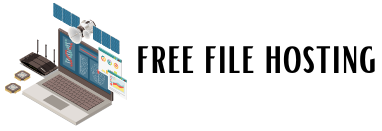Designed for outdoor coverage and indoor connectivity, the LORA Gateway supports thousands of IoT sensors and platforms to allow IoT network deployments in public and private spaces. Lorawan and Lora are supported by the Lora Alliance, a non-profit organization. It is one of the fastest-growing technology alliances with more than 500 member companies (as of 2018) committed to the large-scale deployment of Low Power Wide Area Networks (LPWANs) for the IoT through the development and promotion of the Lorawan Open Standard. Loras Alliance is an open and non-profit organization that aims to standardize how LPWAN can be used globally to enable the Internet of Things (IoT) and machine-to-machine (M2M) in smart cities and industrial applications.
In the Lorraine network architecture, a gateway connects to a network server via a standard IP connection and a terminal device via single-hop radio communication via one or more gateways. The gateway receives and interprets data packets using LORA technology and forwards them to the server via either Ethernet or 3G. There is a one-to-one relationship between the Lora-based device and the gateway on the network, and messages sent to the terminal device move within the gateway area.
IoT platforms use the gateways as a central hub to store perceived knowledge and connect it to external networks. Lora gateways are concentrators. That allows them to receive RF signals sent by Lorawan devices. They have converted them into signals from compatible servers such as Wi-Fi and sending the data into the cloud. As soon as the gateway receives the data, the End Node (Senser) receives the Lora data packet from Lora and forwards it via Internet Protocol (IP) to the network server.
The gateway is the point at which the network can transmit its data to and from the gateway. A typical LPWAN follows a basic star network topology with a single-hop communications model over a single gateway, which is sufficient to allow a large number of unneeded connections.
Given the capabilities of the LORA gateways can be configured in a star network that is required to serve a variety of end nodes. The Lorawan gateways RAK, RAK7249 and Rak7258 have integrated Lora servers that support up to 125 devices. By using fewer devices in remote deployments where mobile network reception is poor, using gateways with internal LORAs servers is a good option as it reduces total deployment costs and ensures service reliability when external networks are not available.
In urban areas, Lorawan network providers offer gateway connectivity services to multiple end-users for a fee. Lorawan gateways receive LORA modulated RF messages from the terminal devices and hear the removal of messages from Lorawan’s network servers (LNs) connected to the IP backbone.
It is important to distinguish between Lorawan end nodes that communicate directly with the Lorawan gateway and low-power Lorawan gateways that communicate with network servers using high-bandwidth communication protocols such as WiFi, Ethernet and cellular.
A Lorawan Gateway is a box that connects a wireless Lorawan terminal device to the Internet like a sensor via a local network. A network server is either in the cloud, where it is managed by a service like Comcast MachineQ, or a physical gateway that operates in packet forwarding mode, sending raw LORA packets through the air to the network server as if it were in the air.
In this case, intelligence can decipher the raw packets in the air and control the connectivity between the devices. Lora doesn’t have radio waves. But, it has them to communicate with its gateways for things like encryption and identification.
The Lorawan architecture consists of sensors and gateway modules designed to centralize and collect the messages received from the various sensors. Lorawan’s communication layer is a large-scale network with an open-source communication protocol defined by Symphony Link consortium LORA Alliance and another open-source communication protocol, created by a company called Link Labs. The simplicity of connectivity and the support of remote communication allow the Lorawan protocol to integrate a large number of sensors with the advantage of a cellular topology.
Communication between sensor nodes and base stations takes place via wireless channels that use the physical LORA layer, while the connection between the gateway and the network server takes place via the backbone of the IP-based network. The Lorawan Node sends packets as they are received by the Gateway module, which is intended to centralize and collect the messages received from the various sensors, which in turn transmit the packets to the Lora network server and application servers. In addition to Lorawan’s network server, the LNS Base Station Controller (BSC) is a key component that serves Lora gateways, provides field settings, alerts firmware and application updates, security and integrity. The Radio Network Controller (RNC) helps monitor and optimise radio performance and coverage of the entire IoT platform across the frequency spectrum, scattering factor and current load.
LORA gateway is a point-to-multipoint network protocol using the Semtech Lora modulation scheme. Using the media access control protocol, it is a long-range, low-range network (LORAWAN). It is an open standard defined by the Lora Alliance, taking into account the energy-efficient nature of the protocol and the fact that many battery-operated devices depend on it.
When used in an all-star topology network based on the open protocol Lorawan, this is perfect for applications that require far-reaching and deep-integrated communication between a large number of low-power devices to capture small amounts of data.
LORA gateway is a type of LPWAN that limits network interference and keeps battery demand low. Due to its many advantages, it is considered one of the best specifications of all LPWAN standards.
End nodes designate devices at the end of the network that are equipped with sensors to collect and monitor data. Lorawan enables terminal devices (sensors and actuators) to connect to the Lorawan network via radio gateways using LORA RF modulation.



